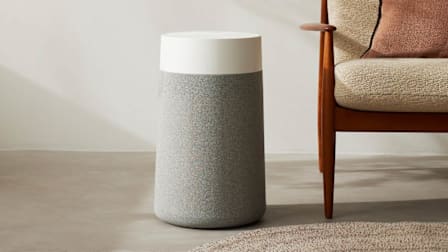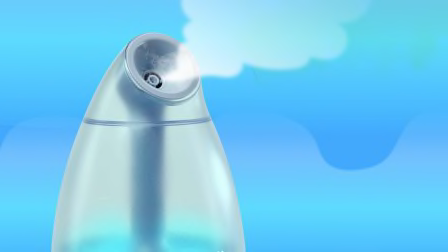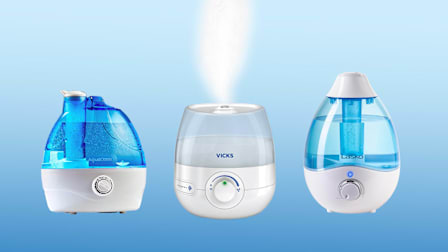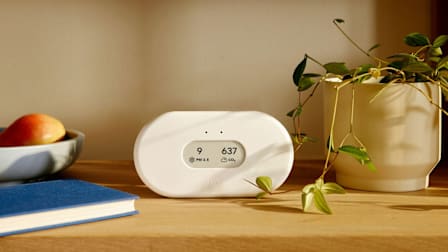How to Improve Indoor Air Quality
The air in your house can be five times more polluted than the air outside, but CR's advice can help you clear the air
Your windows may be spotless and your floors may sparkle, but for millions of adults and children with allergies, asthma, and other respiratory conditions, a house is only as clean as its air.
Though it might be hard to believe, indoor air can be five times dirtier than what we breathe outside, exposing us to carcinogens, including radon and formaldehyde, as well as quotidian lung-gunking impurities, such as pollen, dust mites, pet dander, and a variety of particulate matter created when we burn candles or cook.
Judging from the skyward trend in sales figures, Americans are turning to portable air purifiers in increasing numbers, paying hundreds or even thousands of dollars to reduce indoor air pollutants and the sniffles, sneezes, coughs, and asthma attacks they can trigger.
Check CR’s air purifier ratings for top-performing models you can buy right now. We also test and rate HVAC air filters.
Picking the Right Air Purifier
There are several types of air purifiers, including ionizing, ultraviolet, and filter-based. At CR we test portable filter-based models, which are the most common.
Filter-based air purifiers employ a fan to pull air through a filter that traps particles,” says CR test engineer Dave Trezza, who ran the air purifiers lab for TK years. HEPA filter-based purifiers claim to capture “up to 99.97%” of allergens and pollutants as small as approximately 0.3 microns, which is about the size of fine dust and smoke particles.
To test them we blow smoke and fine clay dust into an airtight chamber, then measure how quickly a purifier can clear the air‚ or not. The very best models in our tests are effective at removing smoke and dust at both high and low speeds. That means they should also be able to capture pollen and mold, which are larger. But once pollen and mold spores land on the floor, nothing but a good vacuum will remove them.
Filter-based air purifiers cannot capture gases, so they won’t protect you from some of the most dangerous indoor air impurities, including carbon monoxide, nitrogen oxides, radon, and volatile organic compounds. And unless they have a carbon filter, they won’t rid your home of odors, so even if cigarette smoke has been filtered from the air, the smell will remain.
Portable air purifiers might not even reduce the symptoms of allergies or the frequency of asthma attacks. But if you’ve taken pains to keep allergens and other pollutants out of your home, an air purifier could help to reduce them further. In addition, running one in the bedroom of a child who suffers from asthma certainly won’t hurt and could be of some benefit. If you decide an air purifier is for you, check our full air purifier ratings and recommendations and keep these things in mind when considering which one to buy:
CADR. This stands for “clean air delivery rate” and indicates the volume of filtered air a unit delivers. Most air purifier packaging will display three CADR numbers, one each for dust, smoke, and pollen. The higher the number, the faster the unit filters the air. The Association of Home Appliance Manufacturers suggests that in the case of smoke, select an air purifier with a CADR that is at least 2/3 of your room’s area.
Room size. Manufacturers make claims that their air purifiers can clean rooms of a certain size, usually expressed in square feet or as small, medium, or large. But in our tests, we found that many models weren’t able to capably clean a room of the size claimed on the box. To get the best performance, choose one of the models that we recommend for large rooms (350 to 650 square feet), even if you’re going to use it in a smaller space. CR recommends buying a larger unit than what is needed for the space, and running it on a lower, quieter speed.
Energy Star. Models that carry this familiar blue logo are 40 percent more energy efficient than non-Energy Star models. That’s an important consideration for an appliance that CR suggests people run 24 hours a day.
HEPA filters. Many air purifiers have a HEPA filter, which can capture very fine particles. Some units also use a prefilter to capture larger airborne particles, which can save you money by extending the life of the HEPA filter. (For important cost considerations, see “The Cost of Clean Air,” below.)
Help May Be in Your Basement
If your home relies on forced-air heating and cooling (as most newer homes do), an effective and efficient way to improve your indoor air quality is simply to upgrade the system’s filter, according to Trezza. That’s because heating, ventilation, and air conditioning (HVAC) systems recirculate the entire volume of air in your house, drawing it through intake vents, filtering it, and distributing it through ducts to every room.
But to turn your HVAC system into an air purifier, you may need to modify it slightly. Most HVAC systems are installed with 1-inch-thick filters designed only to protect the mechanical workings; retrofitting the system to accommodate special filters that are 2 to 5 inches thick will trap more impurities. Unless you’re very handy, you’ll need to pay a one-time fee to have the new, larger filter housing installed between the return air duct and the intake. Costs vary depending on your system and where you live, but HomeAdvisor, a website that compiles home remodeling and repair costs, pegs the national average at about $1,500.
In the lab, CR’s experts have found consistently that the thicker the filter, the better it works to reduce impurities and the less often you’ll need to replace it. “These thicker filters are better for you and for your HVAC system,” Trezza says.
Our recommended filters for HVAC systems are the best at removing dust, pollen, and smoke without impeding the flow of air. “These filters clean all of the air in your house,” Trezza says, “but only when the system is running.”
An HVAC system retrofitted with a thicker filter requires no special attention. “Just change the filter every three months or as often as the manufacturer recommends,” Trezza says. “And be careful not to put it in backward, which could reduce the flow of air.” The annual cost of replacing the filters we tested ranges from $20 to $130.
Reducing Allergens at Home
Allergies got you down? On the "Consumer 101" TV show, Consumer Reports experts explain how to reduce dust mites and other triggers in your home.
Editor's Note: This article also appeared in the November 2017 issue of Consumer Reports magazine.

















